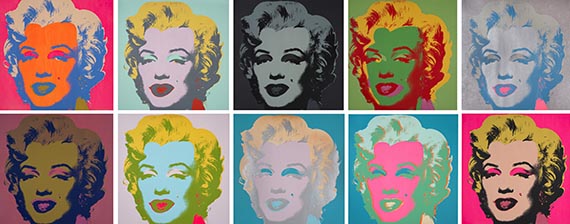Dictionary


Drypoint etching
Drypoint etching is an intaglio technique used in preparing metal plates for printmaking by means of which lines are scratched directly into the plate. Thicker lines are made by applying more pressure to the burin (graver) or etching needle (also a roulette, chalk roll and matting wheel). Thus incising the cold metal creates ragged ridges, called the burr, thrown up along to edge the furrows cut into it. The burr is removed in copperplate engraving but not in drypoint, where it is kept to produce soft, blurred line and painterly effects. Then the plate is coated with ink and whisked to ensure that the burr as well as the line itself absorbs ink. Prints are made by pressing the plate with a great deal of pressure on to the paper, on which the line is represented as a raised deposit (albeit less pronounced than the line produced by mordant etching). Surfaces are created by many different lines being concentrated. Unlike the more usual mordant etching, however, this is not achieved by biting with acid. The burr plays a paramount role in drypoint. It only takes up a limited amount of ink, which, in the print shows up in addition to the actual line as velvety shading. This feature of drypoint is lost after several prints have been pulled and the burr has been broken off or flattened by the pressure exerted by the printing press. That is why collectors prefer first state prints. First used around 1480, the drypoint technique attained its apogee in Rembrandt's work. Consummate masters of drypoint in the 20th century were Edvard Munch, Ernst Ludwig Kirchner, Max Beckmann and Pablo Picasso.
Drypoint etching is an intaglio technique used in preparing metal plates for printmaking by means of which lines are scratched directly into the plate. Thicker lines are made by applying more pressure to the burin (graver) or etching needle (also a roulette, chalk roll and matting wheel). Thus incising the cold metal creates ragged ridges, called the burr, thrown up along to edge the furrows cut into it. The burr is removed in copperplate engraving but not in drypoint, where it is kept to produce soft, blurred line and painterly effects. Then the plate is coated with ink and whisked to ensure that the burr as well as the line itself absorbs ink. Prints are made by pressing the plate with a great deal of pressure on to the paper, on which the line is represented as a raised deposit (albeit less pronounced than the line produced by mordant etching). Surfaces are created by many different lines being concentrated. Unlike the more usual mordant etching, however, this is not achieved by biting with acid. The burr plays a paramount role in drypoint. It only takes up a limited amount of ink, which, in the print shows up in addition to the actual line as velvety shading. This feature of drypoint is lost after several prints have been pulled and the burr has been broken off or flattened by the pressure exerted by the printing press. That is why collectors prefer first state prints. First used around 1480, the drypoint technique attained its apogee in Rembrandt's work. Consummate masters of drypoint in the 20th century were Edvard Munch, Ernst Ludwig Kirchner, Max Beckmann and Pablo Picasso.
Offers
Headquarters
Joseph-Wild-Str. 18
81829 Munich
Phone: +49 89 55 244-0
Fax: +49 89 55 244-177
info@kettererkunst.de
Louisa von Saucken / Undine Schleifer
Holstenwall 5
20355 Hamburg
Phone: +49 40 37 49 61-0
Fax: +49 40 37 49 61-66
infohamburg@kettererkunst.de
Dr. Simone Wiechers / Nane Schlage
Fasanenstr. 70
10719 Berlin
Phone: +49 30 88 67 53-63
Fax: +49 30 88 67 56-43
infoberlin@kettererkunst.de
Cordula Lichtenberg
Gertrudenstraße 24-28
50667 Cologne
Phone: +49 221 510 908-15
infokoeln@kettererkunst.de
Hessen
Rhineland-Palatinate
Miriam Heß
Phone: +49 62 21 58 80-038
Fax: +49 62 21 58 80-595
infoheidelberg@kettererkunst.de
We will inform you in time.




